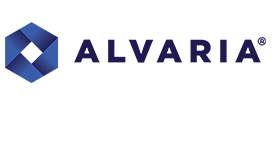Robert Moore of Aspect Software shares his advice for better utilizing your contact workforce management (WFM) system.
Up until now, we have largely discussed ways to help agents with workforce optimization tools and processes. Agents on the front line are in a rapid shift and require most initial focus.
But when agents move from a centralized location to a distributed environment and the very culture of the organization is in flux, many of the existing workforce management (WFM) assumptions and parameters should be re-examined. This falls on our organizational management teams to assist our front line.
As we review these crucial elements, it’s important to remember that while productivity can be measured the same way in a remote environment as it’s measured in an office, it’s not ideal. Why should performance and productivity be reevaluated?
Consider these examples:
- Forecasts: Many changes for working-from-home may affect the accuracy of contact forecasts, for example, new hours of operation, staffing changes, increased shrinkage, and new digital customer service channels being substituted for voice. Forecasting should be reviewed.
- Scheduling: Scheduling will also be affected by the changes you are making to facilitate WFH. New shifts, extended coverage, flexible shift bidding, bidding frequency and many other factors warrant a review of scheduling assumptions.
- Performance Monitoring: With agents working primarily alone in their home offices, expectations for adherence and productivity will likely change as well. Adherence alarms, shrinkage analysis, super-state analysis and many other existing performance reporting mechanisms will need to be adjusted to the new norms of performance.
It’s worth noting that managing a remote team makes flexible workforce management scheduling options much more attractive because agents can act on that flexibility.
By building in this flexibility, businesses and management are much better prepared to continue critical business functions, even when unexpected events occur.
Additional scheduling flexibility can be offered to agents by allowing them to call in sick, trade shifts, and bid for shifts from a mobile device. By providing agents maximum flexibility in their schedules, contact centers ensure improved schedule adherence, productivity, and efficiency.
It’s been proven again and again that happy agents lead to happy customers, and higher employee satisfaction from home agents drives improved CSAT, customer retention and loyalty.
Managers and leaders play a crucial role when it comes to an employee’s satisfaction and performance.
Recently, companies that have successfully and quickly transitioned their employees into a productive remote workforce have focused largely on improving processes and carefully reviewed expectations in order to ensure optimal team performance.
This blog post has been re-published by kind permission of Alvaria – View the Original Article
For more information about Alvaria - visit the Alvaria Website
Call Centre Helper is not responsible for the content of these guest blog posts. The opinions expressed in this article are those of the author, and do not necessarily reflect those of Call Centre Helper.
Author: Alvaria
Published On: 7th May 2020 - Last modified: 12th May 2020
Read more about - Guest Blogs, Alvaria






 Alvaria was founded through the merger of Aspect Software and Noble Systems, technology leaders in Customer Experience (CX) and Workforce Engagement solutions
Alvaria was founded through the merger of Aspect Software and Noble Systems, technology leaders in Customer Experience (CX) and Workforce Engagement solutions 








